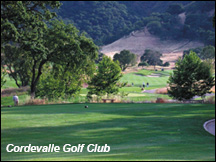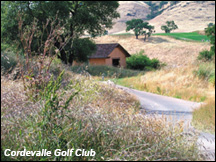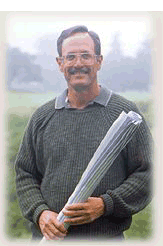 |
|---|
|
|||||||||||||||||
 |
|||||||||||||||||
 |
|||||||||||||||||
 |
|||||||||||||||||
Is Native becoming Natural? California Fairways Golf course architects around the world spend their careers seeking spectacular natural settings upon which to weave fairways, greens, and tees. The greatest and most spectacular of golf’s treasures feature memorable natural settings, settings upon which the introduced elements of the game become part of the native landscape. In recent times, as spectacular existing natural sites are hard to come by, there has been significant effort by golf architects to create a native look. We often find ourselves in the difficult position of justifying the use of 100 acres or more of irrigated turf on which a relative few play the game. As populations grow and the demand for water increases, golfers will find the already frustrating approval process even more difficult (hopefully not impossible). The incorporation of significant native landscape within the golf course is becoming more common and will likely become the natural concept of future golf courses. I have always found native and natural a bit confusing to understand. Eucalyptus trees, pampas grass, and iceplant are not “native” California plants but they certainly grow naturally in the landscape, that is, they thrive without management or maintenance from humans. It is really these natural landscapes that survive on little or no management that suit the non-play areas of the course. Although any non-turf landscape adds texture and character to the golf course, such areas that require as much or more effort than the maintained turf are difficult to sustain and hard to justify. Besides the visual and habitat qualities of the native rough, one of its primary benefits is reduced maintenance cost. Creating an impressive “natural” landscape has often become a financial burden. Both golfers and management must realize that a truly natural landscape will vary throughout the year (particularly here in California). These natural landscapes will have many plants that some would consider weeds and exotics, and will often, perhaps most often, produce unplayable lies. As an architect, I find it very difficult to add “native” area into older established courses. Most older courses that are on small properties (less than 160 acres) and now surrounded or integrated with housing will have a very difficult task making small “native” landscapes look natural. The very essence of natural suggests that the element is the dominant landscape. For most older and smaller courses, the “natural” landscape has become the turf areas. A small strip of un-maintained native (non-turf) between a manicured fairway and the urban back yard will appear out of place and come across as something that the superintendent has forgotten to maintain. If the course is on a larger property surrounded by a native or undeveloped landscape, it will be much easier to convert turf into un-maintained natural area. You can draw upon the visual character of the surrounding to give the impression that the native landscape is the dominant character of the site. Producing a course from scratch, in which the concept is to produce a product that appears to be woven through and a part of a native landscape is yet another matter. If one starts with a nice natural setting (or even a decent setting), the architect can integrate the maintained turf and golf elements in such a way as to visually emphasize the native landscape, even if the native landscape is completely created during the construction process. The architect can create forced carries over natural elements, create native mounding that will visually obscure portions of the fairway, or completely hide adjacent fairways. The architect can create smaller, individual tees, surrounded by natural landscapes. All of these design elements give the impression that the natural areas (un-maintained turf areas) are the predominant landscape of the site. It is quite possible that the site will have far more area of turf than of non-turf, but a skilled architect can create the appearance that the vast majority of the site is natural. In California we have a short winter season of green and a longer summer season of gold native landscape. Irrigation therefore becomes a critical factor, as irrigating the non-maintained turf areas will produce a distinctively different landscape than it’s dry non-irrigated neighbor. The use of full circle head will leave a perimeter of thick unplayable growth (many would considers weeds). The use of part circle heads that irrigate only the maintained turf will reduce water use and create a sharper visual edge along the “natural” rough. In California, this native rough will thin out significantly in the summer and most often become quite playable. If the architect is dealing with a large site (say 200 or more acres) and has the advantage of having native surrounding properties, the task of creating the natural design is less difficult. The Cordevalle Golf Club in San Martin was blessed with an Oak studded native terrain surrounded by similar undeveloped terrain, much of which was protected open space. The course was designed in the softer terrain on the valley floors, leaving the strong visual elements of the native hillsides. The long distant views are therefore dominated by the native landscape. The holes were designed with subtle doglegs, forced carries for the tee, cleaver use of the arroyos and existing oaks, so that the foreground from the tees is likewise dominated by the native landscape. The transplanting of many mature oaks and the revegetation of the non-turf areas with a “native” grass mix all harmonized to create a natural pastoral seen, as well as spectacular golf holes. Although The Links at Spanish Bay appear today to be integrated into a magnificent native dunescape, the course and dunes were sculpted from large volumes of imported earth. The goal was to create a landscape that appeared to be native dunes in which a golf course had been integrated. This is something considerably different than creating a golf course in which native dunes are incorporated. Although the maintained turf is some 60% of the land area, the 40% dunescape gives the impression to be the dominant and native landscape. This was accomplished by setting the fairways low, twisting and contouring the fairways to minimize the view of turf grass from the tee, building up the dunescape near tees and between holes so that the primary and dominant view for the golfer was that of the dunes. The end result is that of a native sand dune environment that is home for 18 holes of golf. The “native” dunes were planted from scratch. Restrictions did not allow plants such as iceplant and pampas grass, which grow naturally on the site, but restricted the plant material to native California dune species. The dunes required a significant amount of management and maintenance in the early years, and still today require management to maintain the desired look and character. As water issues grow more severe in the Golden State, golf will continue to evolve. The golf course will likely take on a more native or natural look. The amount of maintained turf will likely shrink despite the tendency toward longer courses. I believe this will be good for the game, as the course will move toward its natural roots, a game played as an obstacle course thorough nature, a game with a bit of mystery and intrigue, through a landscape with texture and character. Perhaps even a blind shot or two! |
||
Copyright © 2000-2008
Knott & Linn Golf Design Group, LLC
All Rights Reserved
Photography
Courtesy of John & Jeannine Henebry
This website created by
JustImagineDesign.com
